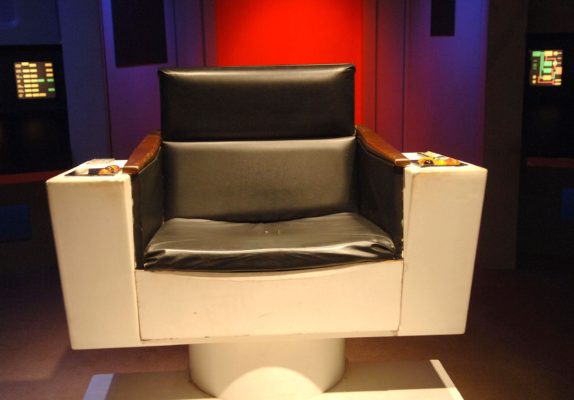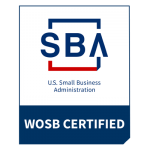Spock and the Furniture Catalog

Spock and the Furniture Catalog
I’m nearly 3 months into my position as the Excel Technologies CEO and my desk is unexpectedly covered with floor plans and furniture catalogs. Our lease is up in about six months or so and it turns out that the still healthy economy of Northern Virginia means that we aren’t they only ones growing and seeking new space. Our realtors have issued dire warnings about what might happen if we wait too long in this market. I want to scream “but wait! I don’t have enough data!”
Leases go 5 to 10 years. Companies change a lot in 5-10 years. There are variables that can’t be fully identified, much less accounted for. I confess that at the moment I feel a bit like Spock in ST IV: The Voyage Home.
James T. Kirk: Mr. Spock, have you accounted for the variable mass of whales and water in your time re-entry program?
Spock: Mr. Scott cannot give me exact figures, Admiral, so… I will make a guess.
James T. Kirk: A guess? You, Spock? That’s extraordinary.
Spock: [to McCoy] I don’t think he understands.
There is a crystal ball on my desk. It is unhelpful. Our CFO, who has been through this before, is slightly more helpful. His advice: Go modular. Try to avoid creating employee resentment with furniture selections. I’m painfully reminded of an event a few years ago when I was on the front lines of some decisions which caused exactly that resentment. I’m cautious.
The HermanMiller catalog draws me in. It has pictures. Somehow most of the pictures feature Excel’s Blue and Red American Flag pantone colors. I can see it in our future office space, where ever that office space might end up being.
And a paragraph from the catalog leaps out at me:
“We synthesized this research into 10 activities – seven collaborative activities people do in groups of two or more, and three focused, individual activities. No matter the size or location of your organization, some combination of these 10 activities constitutes everyday work for your people. Considering these needs in the design of your space will help your people and organization become more productive and effective.”
The words “productive” and “effective” sing to me. I think about the fact that there are people who spend their entire lives thinking about office design and the associated furniture. Enough so that they would have identified those 10 activities and designed for them. Logically. In a way that gives some form to those variables I can’t fully identify yet.
HermanMiller defines Working Alone as focused activities performed by individuals. Within this category they call out 3 key areas:
- Process and Respond: occurs in response to the feedback look of emails, phone calls, and texts that drive work forward.
- Create: occurs when a person engages with the content associated with their role and develops deliverables.
- Contemplate: is an opportunity for an individual to pause and reflect on their work – or ignore it momentarily and seek respite.
Somehow in these activities, particularly “contemplate”, there is a permission given to the introvert in me and I am mindful of the gift of silence that can be hard to find in modern offices. And of the many late nights I’ve chosen to work over the years just for the dark quiet that brings order and renewal within my own thoughts.
Because offices bring people together, it makes sense to me that the other category, Working Together, has many more components. Again, HermanMiller offers a short and yet helpful description as collaborative activities involving two or more people.
- Chat: is an incidental and impromptu interaction between colleagues.
- Co-create: is the generation of new ideas and content among groups.
- Divide and Conquer: happens when team members spread out within a group space to work on their own pieces of a larger project.
- Show and Tell: is a planned information session for teams of colleagues, with or without their clients.
- Warm Up, Cool Down: occurs in the time leading up to and immediately following a formally scheduled meeting.
- Converse: is a purposeful interaction among a group of colleagues to address a defined topic.
- Huddle: occurs when a team needs to address an urgent issue or receive instructions for a plan of action.
I can readily picture in my mind when I have engaged in all 7 activities and how valuable I found them to be. I know from our teleworkers that finding ways to collaborate virtually is incredibly important and I want to make sure we don’t overlook this in our new spaces.
There is still a lot of data I’d like to have moving forward in this process. But I won’t have it and I have to be okay with this fact. What I do have is furniture catalogs – which it turns out are going to be more valuable than expected. Isn’t life funny like that?


